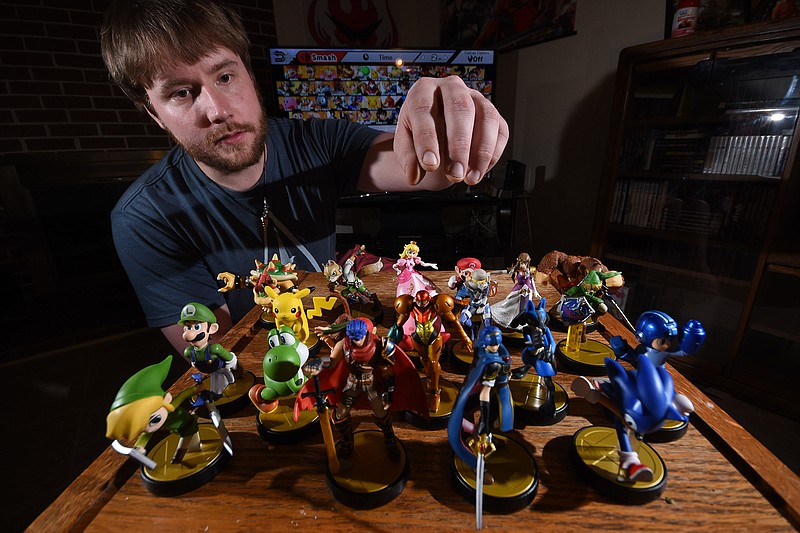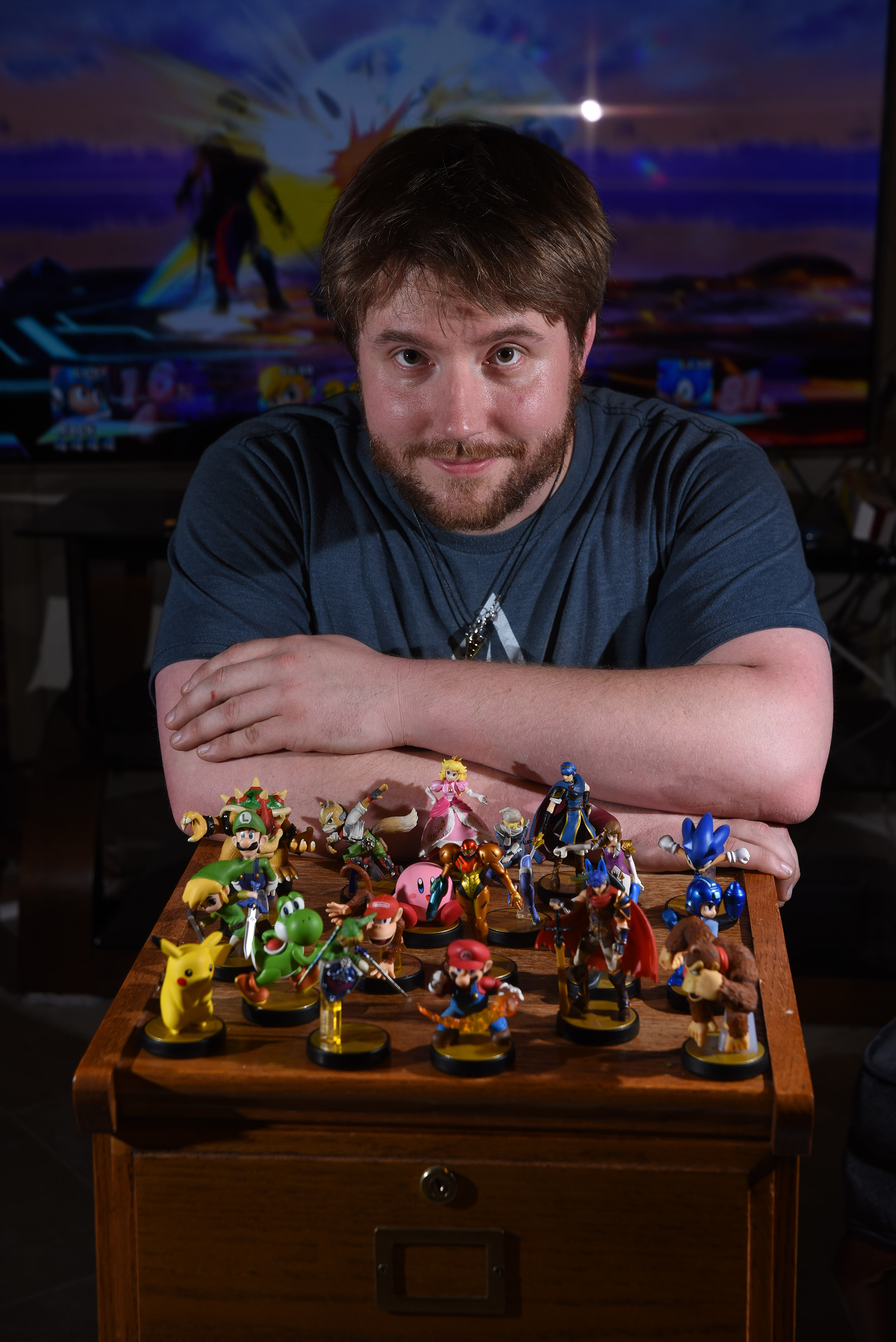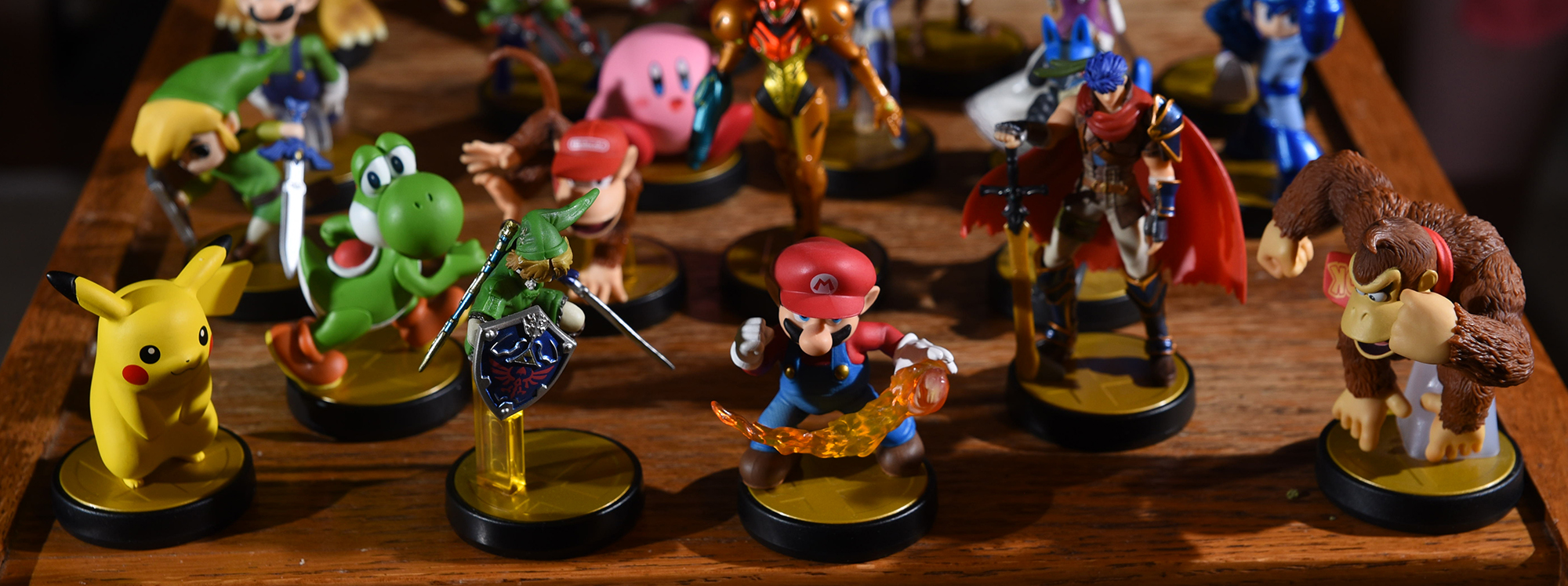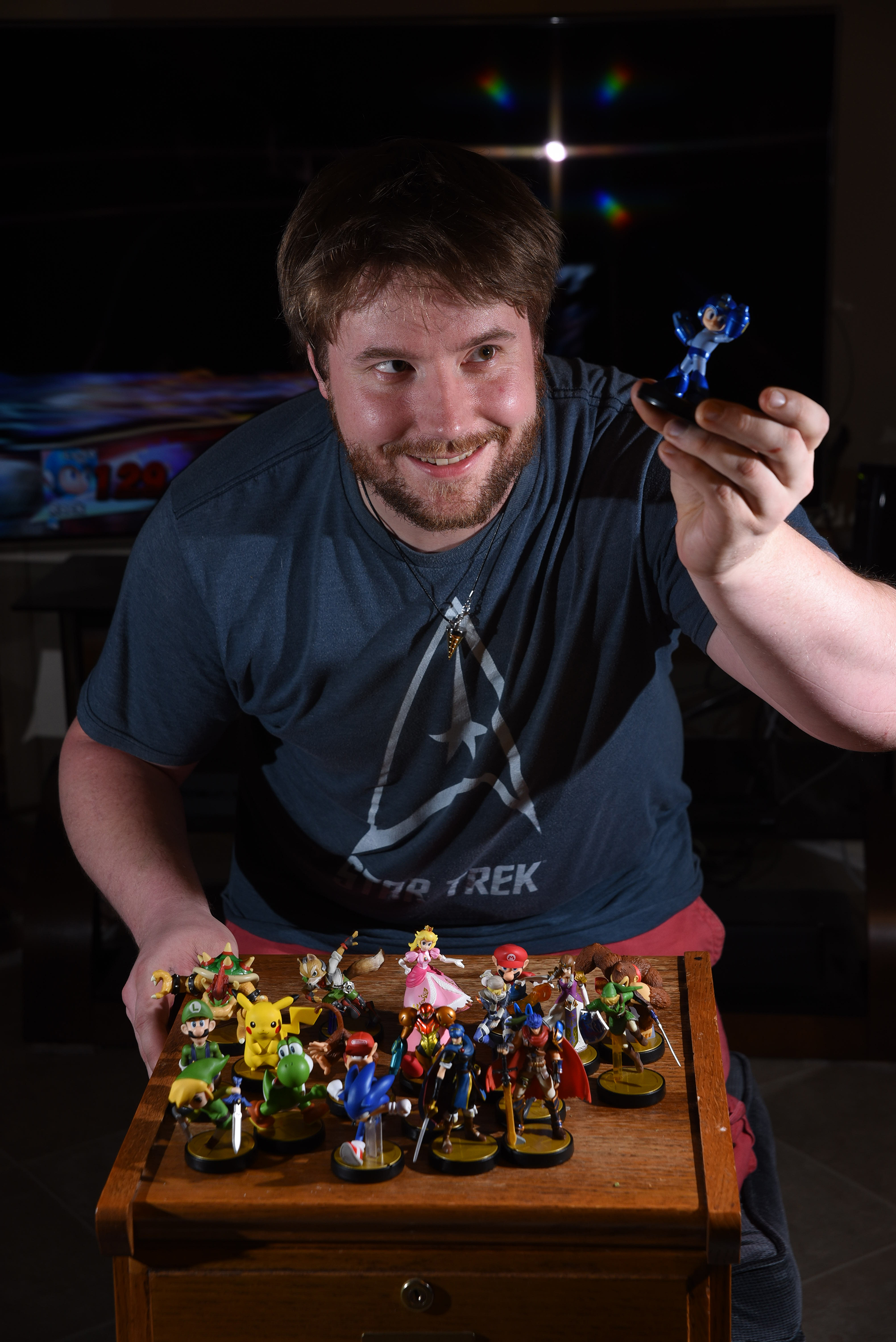From G.I. Joe to Barbie to Treasure Trolls, collecting dolls and action figures has been a childhood rite of passage for decades, letting kids bone up on their hoarding skills while crafting imaginary adventures for their favorite pop culture characters.
In the last five years, however, a new generation of toys has emerged that employs baked-in technologies such as Bluetooth networking and near-field communication to transform those adventures from imaginary to interactive.
Lumped under the umbrella term "toys-to-life," these figurines bridge the gap between physical and digital play. By being placed on special plastic bases, they can be imported into video games, where they become playable characters that can be guided through adventures or used to unlock hidden content.
"These are more than action figures. They are interaction figures," says Eric Hirshberg, the CEO of Activision Publishing in a 2011 announcement for "Skylanders Spyro's Adventure," the first entry in the wildly successful Skylanders toys-to-life franchise.
"We've given players a whole new genre that bridges the gap between the real and virtual worlds," he continues. "From the first time a kid picked up a stick and pretended it was a sword, toys have unlocked kids' imaginations. And how often have you wanted to bring those toys to life, to see them become animated and take them on an adventure? Skylanders ... does just that."
COLLECTED
In Skylanders games -- and similar toys-to-life product lines -- players purchase starter packs, which usually include a game disc, a few initial figurines and a plastic synchronizing base. Players can build a collection and unlock more gameplay features by buying different figurines in single packs or bundles.
Once a novelty on the market, the Skylanders figures and video games have become a toy industry juggernaut. According to statistics from parent company Activision, the Skylanders franchise -- now in its fourth generation of toys -- has sold more than 240 million figurines since its launch in 2011, generating more than $3 billion in revenue and making it one of the top 20 bestselling video game franchises of all time.
In 2013, Disney latched its own car to the toys-to-life money train with Disney Infinity, a universe of collectible toys and video games that allows players to play as digital avatars of characters from the company's mainline films as well as the Marvel comic book and movie universe. In Infinity's first 10 months on the market, Disney reported that it had sold more than $550 million worth of Disney Infinity starter packs -- about 7.3 million units -- at $75 a piece.
Following a November 2014 launch, video game giant Nintendo has seen similar success with its line of Amiibo toys-to-life figurines. Modeled after iconic characters such as Mario, Donkey Kong and Pikachu, more than 10 million Amiibos had shipped as of May 8, according to company reports.
Rather than becoming playable characters, Amiibo figurines can be used to unlock hidden content such as new costumes or in-game items in supported games. Despite more narrow functionality compared to other toys-to-life lines, the demand for Amiibos has been rabid, and especially rare figurines have sold on eBay for more than $20,000 -- about 1,500 times the retail asking price.
For Ringgold, Ga., resident Andrew Morgan, 29, the collectability of hard-to-find Amiibos has proven to be a financially slippery slope.
"I got my hands on a Marth Amiibo [from the 'Fire Emblem' games], which is one of the rarer Amiibos," he says, chuckling ruefully. "That led to my downfall where I was like, 'Oh, I have a rare one. I should collect these."
Thanks to a running tally his girlfriend keeps "to make fun of me," Morgan estimates he's spent about $350 on a collection of more than 20 Amiibo figurines, which he displays on a bookshelf and entertainment center -- when he's not syncing them to games on his Nintendo Wii U and 3DS handheld.
THE 'PHYGITAL' APPEAL
Morgan is a lifelong fan of action figures -- he built up a sizable collection of "Power Rangers" and "Teenage Mutant Ninja Turtles" toys as a child -- and he says he can see the appeal of toys-to-life figurines -- also known as "phygital" entertainment -- despite the fact that they are competing with purely digital sources of entertainment such as tablets and smartphones.
"Kids like to collect things," he says. "The cool thing about this is that they're interactive toys. I probably would have cried and yelled to my grandparents about wanting them if they'd had these when I was younger. I'd totally be into it if I were a kid today."
Playing with a physical toy isn't just an entertaining experience. Experts say there's distinct developmental value to children interacting with toys physically rather than the largely untactile experience of using a touchscreen.
In a Jan. 12 op-ed on the value of physical play published in academic journal The Conversation, Emmanuel Tsekleves, a British expert on design interaction, argued that the need for physical play is fundamental to growing up.
"Looking back at early childhood development, it's through touch [that] we first perceive and make sense of the world around us," he writes. "We live in an increasingly digital age, but despite this -- perhaps because of this -- the yearning for analog is re-emerging.
"Despite all the progress possible through increased digitization of the world, the physical is deeply imprinted in our biological and psychological makeup and is how we make sense of our world."
Some experts argue that the success of the toys-to-life movement is partially rooted in the fact that it retains hands-on interaction while embracing society's shift toward all things digital.
"By combining the two, a child gets to experience the toy in an expanded way," says Richard Gottlieb, the founder of Global Toy Experts, a toy industry consultancy firm. "Today's kids live in a bigger world than we do. They do not have a borderline between that which is real (physical) and that which is virtual (digital). It is all real to them."
That's not to say, he adds, that the success of toys-to-life products mean the purely physical toy is going anywhere. It's just changing with the times.
"Kinesthetic (physical) play is an essential part of learning about the world in which we live. ... There will always be physical toys," he adds. "There will be, however, an important play segment made up of phygital products. There will be more of them, and they will get better."
Contact Casey Phillips at cphillips@timesfreepress.com or 423-757-6205. Follow him on Twitter at @PhillipsCTFP.
* What it is: An action-adventure game in which gamers take control of characters from various Disney/Pixar movies, Marvel comics and -- in the soon-to-be-launched 3.0 edition -- the Star Wars universe using specially programmed plastic figurines and physical game discs.
The game includes plot-driven "play set" adventures as well as a free-form "toy box" mode in which players mix and match characters and elements from various sets, e.g., "Toy Story," "Pirates of the Caribbean" and "The Avengers," to create their own unique world and adventures.
* Figures available: 64 (26 Marvel superheroes/38 "Disney originals")
* Cost: $13 per figure/$35 multi-character pack/$75 starter pack
* Latest game release: "Disney Infinity: Marvel Super Heroes" (released Sept. 23, 2014)
* Next game release: "Disney Infinity 3.0" (slated for release in fall/winter 2015)
* Platform: PlayStation 3/4/Vita, Xbox 360/One, Wii U, PC, iOS, Android
* Website: infinity.disney.com
* What it is: A third-person adventure game set in a magical realm of floating islands. Players partner with a vast array of powerful heroes by placing their figurines on a "Portal of Power" base, then control them in a video game on a quest to stop the nefarious villain Kaos. New entries in the series add additional gameplay variations. The most recent fourth entry in the series, "Skylanders: Trap Team," lets players "trap" and then control enemy creatures. Previous entries have included more powerful, giant Skylander figurines or have players mix and match by swapping out the tops and bottoms of different figurines to unlock new powers.
* Figures available: 191 (32 in "Spyro's Adventure"/46 in "Giants"/56 in "Swap Force"/57 in "Trap Team"). There also are additional limited variations and store exclusives.
* Cost: $13 per figure/$35 expansion bundles/$60 starter pack
* Latest game release: "Skylanders: Trap Team" (released Oct. 5, 2014)
* Next game release: None announced, but new entries have appeared annually since 2011.
* Platform: PlayStation 3/4/Vita, Xbox 360/One, Wii/Wii U/3DS, PC, iOS, Android, Fire OS/TV
* Website: www.skylanders.com
* What it is: Stylized plastic figurines based on characters from classic Nintendo franchises, including "Super Mario," "The Legend of Zelda," "Metroid," "Pokemon" and "Animal Crossing." A near-field communication chip built into the base of the figurine allows it to pair with a Nintendo-brand game console or handheld to unlock new content -- costumes, characters, items, trainable computer characters -- in supported games, such as "Mario Kart 8," "Mario Party," "Super Smash Bros." and "Code Name: S.T.E.A.M."
* Figures available: 36 (an additional 22 will be released by the end of the year)
* Cost: $10-$13 per figure/$60 bundle with Mario Amiibo and "Mario Party 10" for Wii U. Import prices and special-edition figurines cost more.
* Latest game release: Wave 4 figurines (released March 20, 2015)
* Next game release: Wave 5 figurines (slated for release Friday)
* Platform: Wii U/3DS
* Website: www.nintendo.com/amiibo/
* What it is: In the spirit of the worlds-colliding premise of "The Lego Movie," Dimensions is an action-adventure game in which characters from different Lego series -- DC Comics, "The Lord of the Rings," "Back to the Future" -- must join forces to stop Lord Vortech, an evil mastermind who threatens the entire Lego multiverse. Players can control Lego-ized versions of characters such as Benny from "The Lego Movie," and Legolas from "Lord of the Rings" by placing their corresponding mini-figure on a toy pad "gateway." Once in the game, they'll play through a quest crisscrossing the many Lego universes. Up to seven mini-figures, vehicles or gadgets can be brought into the game at once, and additional aftermarket packs will add new missions and characters as the series progresses.
* Figures available: Finalized lists have not been released, but the starter pack will include Batman, Wyldstyle and Gandalf. Expansion packs at launch will include properties such as "Ninjago," "The Wizard of Oz" and "Back to the Future."
* Cost: $15 per figure/$25-$30 expansion packs/$100 starter pack
* Next release: Slated for release Sept. 27, 2015.
* Platform: Xbox 360/One, PlayStation 3/4, Wii U
* Website: www.lego.com/en-us/dimensions



